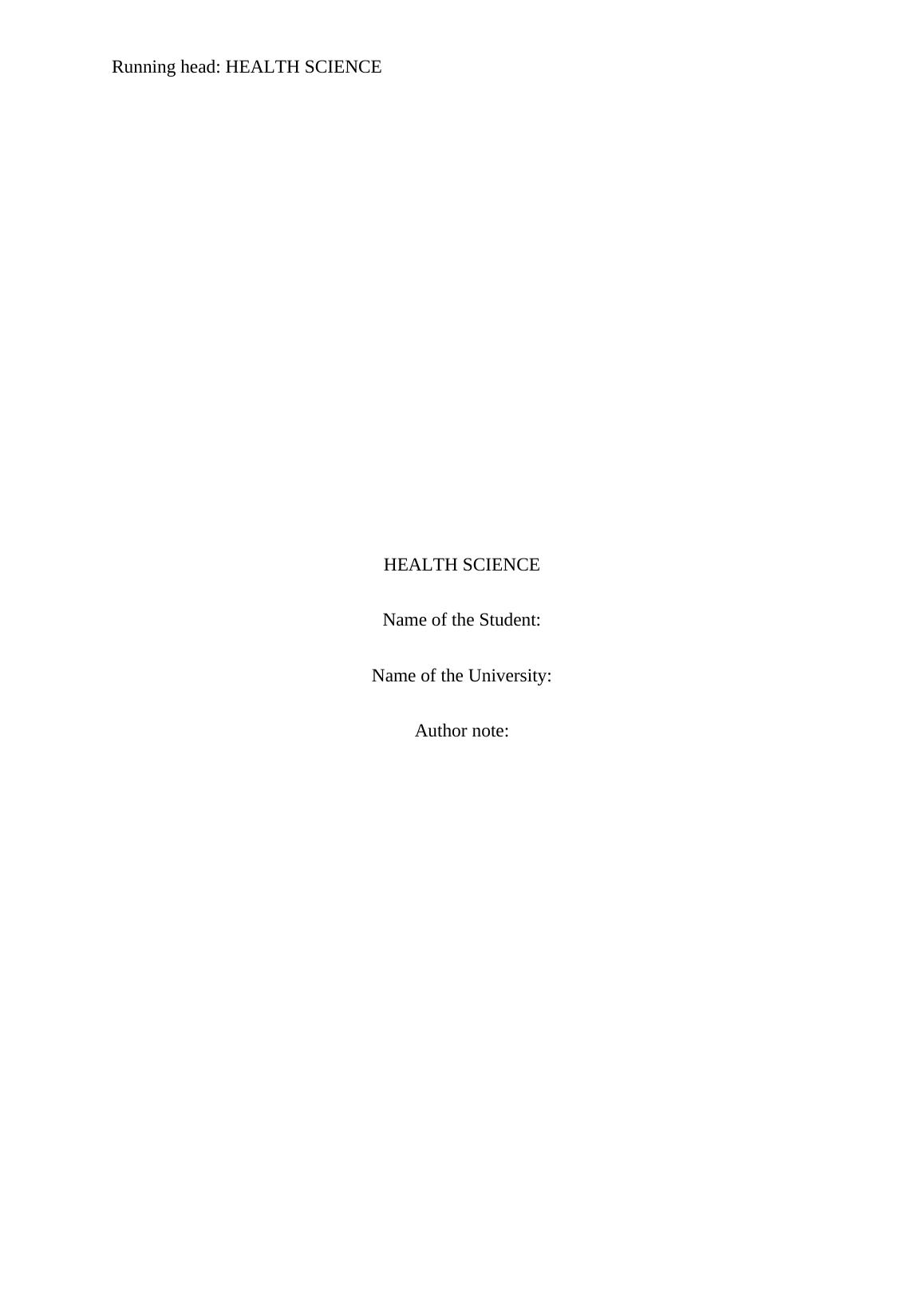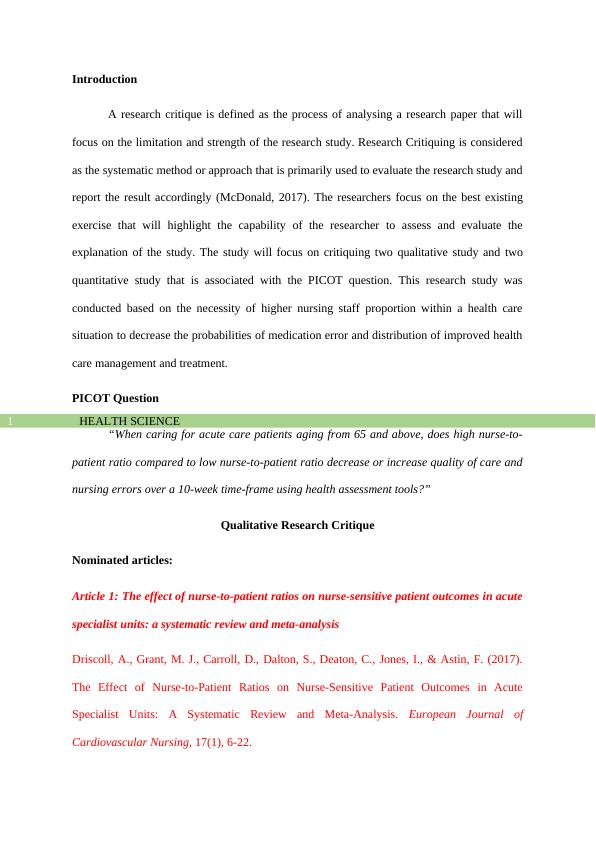Research Critique on Nurse-to-Patient Ratios and Medication Errors
Finalize the critical analysis of qualitative and quantitative research critiques on four articles, and propose evidence-based practice changes based on the identified practice problem and PICOT question.
11 Pages2897 Words107 Views
Added on 2022-12-15
About This Document
This research critique examines the relationship between nurse-to-patient ratios and medication errors, focusing on qualitative and quantitative studies. The findings highlight the importance of adequate nursing staff and proper education in reducing medication errors and improving patient outcomes.
Research Critique on Nurse-to-Patient Ratios and Medication Errors
Finalize the critical analysis of qualitative and quantitative research critiques on four articles, and propose evidence-based practice changes based on the identified practice problem and PICOT question.
Added on 2022-12-15
ShareRelated Documents
End of preview
Want to access all the pages? Upload your documents or become a member.
The Importance of Nurse-to-Patient Ratios in Healthcare Settings
|8
|1580
|461
Quantitative Research Critique on Nurse-to-Patient Ratios in Acute Care
|8
|1955
|34
Nursing Shortage and Patient Outcomes: A Literature Review
|6
|1897
|260
The effect of nurse-to-patient ratios on nurse-sensitive patient outcomes in acute specialist units: a systematic review and meta-analysis
|17
|11001
|34
Nurse to Patient Ratio and its Impact on Patient Care
|6
|1400
|428
Importance of Nurse-Patient Ratio: PICOT Statement and Literature Research
|7
|2044
|425




